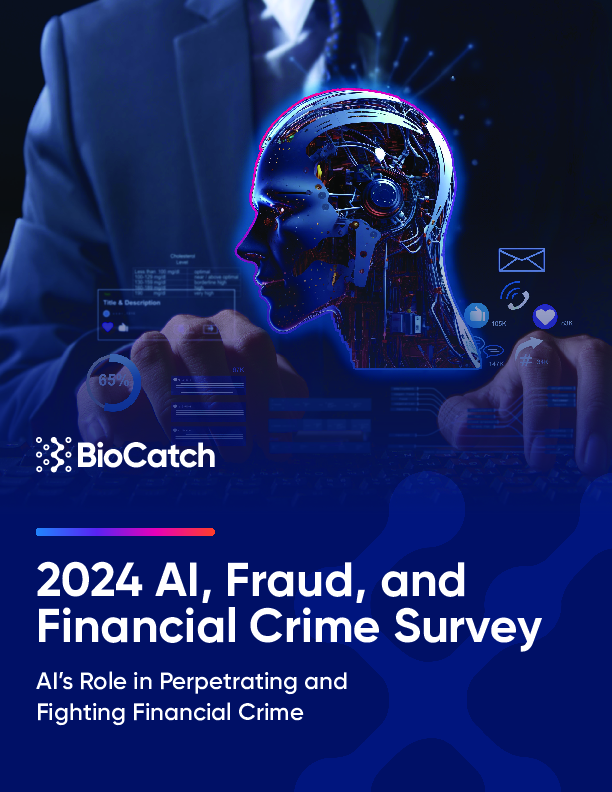

Klient: StrategicABM Ltd
Formát: Whitepaper
Velikost: 3,3 MB
Jazyk: Angličtina
Datum: 15.08.2024
2024 AI, Fraud, and Financial Crime Survey: AI’s Role in Perpetrating and Fighting Financial Crime
Financial crime poses an existential threat to financial institutions, their customers, and our society as a whole. From money laundering and terrorist financing to bribery and human trafficking, financial crime undermines the very foundation on which we’ve built our financial systems. Current investments in AI and biometrics already prove inadequate in deterring financial crime. Anti-money laundering (AML) and fraud-fighting executives report a concerning increase in financial crime in just the last year. BioCatch expects that trend to continue into 2024 and beyond.
Consumers and, increasingly, governments look to financial institutions to combat fraud and prevent financial crime. Consumers spend more and more of their lives online, posting personal updates to social media, shopping on e-commerce sites, and paying bills, transferring funds, and checking balances from their phones. It is no longer possible to operate without a digital identity, leaving every one of us vulnerable to bad actors, who find in this vast digital world ample opportunities to scam us.
To better understand the current state and future landscape of financial crime and how and where it intersects with AI, BioCatch commissioned a global survey of fraud-management decision makers, AML professionals, and risk and compliance leaders at financial institutions around the world.
What we found is that banks are facing a variety of emerging threats, many of which are powered and/or enabled by AI. At the same time, banks are investing in AI and integrating solutions that leverage this technology. But it isn’t enough. Further investment is needed. While most financial institutions are already using AI for financial-crime detection (74%) and fraud detection (73%), all respondents expect both financial crime and fraud activity to increase in 2024.
Consumers and, increasingly, governments look to financial institutions to combat fraud and prevent financial crime. Consumers spend more and more of their lives online, posting personal updates to social media, shopping on e-commerce sites, and paying bills, transferring funds, and checking balances from their phones. It is no longer possible to operate without a digital identity, leaving every one of us vulnerable to bad actors, who find in this vast digital world ample opportunities to scam us.
To better understand the current state and future landscape of financial crime and how and where it intersects with AI, BioCatch commissioned a global survey of fraud-management decision makers, AML professionals, and risk and compliance leaders at financial institutions around the world.
What we found is that banks are facing a variety of emerging threats, many of which are powered and/or enabled by AI. At the same time, banks are investing in AI and integrating solutions that leverage this technology. But it isn’t enough. Further investment is needed. While most financial institutions are already using AI for financial-crime detection (74%) and fraud detection (73%), all respondents expect both financial crime and fraud activity to increase in 2024.




